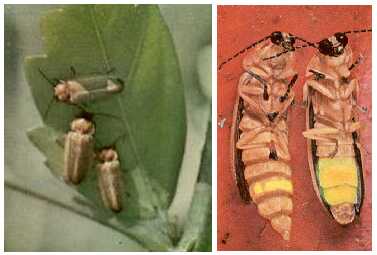

By far the most charming part of Pirates of the Caribbean for me is the Blue Bayou--the night "swamp" area just after the loading dock. And the most charming part of that is the fireflies. I was so enthralled by this whole setting that I became quite interested in fireflies in general in 1969, and eventually built some of my own artificial fireflies for the back yard. When my high school Geography class required us to write a lengthy paper on some region of the U.S.A., I chose the bayous of the southeastern United States. I not only got an "A" on this report, but also the highest score in the class!
I don't remember the fireflies when I went on the Pirates for the first time in 1968. I wonder if they had been implemented then? On my 1969 Disneyland trip I noticed them but didn't know what they were; I had to ask what they were supposed to be! I'd seen real fireflies when I was a child, and these didn't look like them very much.
Some people say Disneyland's Blue Bayou fireflies look like real fireflies. I say not. Real fireflies tend to fly horizontally quite a bit, plant to plant, whereas Disney's fireflies flit incessantly in one small region. Real fireflies also don't flash quite as frequently, and each flash is rather fast, whereas Disney's fireflies have more sustained and more frequent flashes. Real firefly flashes also occur in very quick pairs. In any case, Disney created his own version of reality in the Blue Bayou, and it's beautiful.
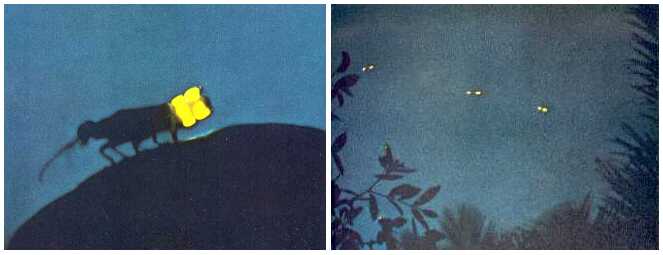
Blue Bayou fireflies are very simply made: essentially a small air blower blows a small hanging light bulb around at random. The wire pair on which the bulb hangs functions both as an electrical power source to the bulb, and as a spring to make the bulb bounce up and down more. Without the spring effect, the bulb would just swing from side to side.
The air blowers Disneyland uses are about six inches wide and sit on the ground, mostly hidden by plastic ferns. Technically these are called centrifugal blowers because they operate by a rotating a squirrel-cage type set of blades, in contrast to ordinary fan blades. The rotating wheel of blades pushes air out of an opening on the curved side of the device. I'm not sure why Disneyland chose centrifugal blowers over shrouded fans. Maybe they consume less power, or maybe Disneyland Imagineers just happened to have some handy (they're found inside of car air conditioning systems, I'm told). Ordinarily, regular blade fans are a lot easier to find in stores.
The picture below shows three centrifugal blowers similar to those used in the Blue Bayou, and are from www.buildingdesign.co.uk.
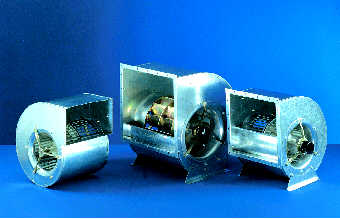
I originally thought that the Blue Bayou fireflies were done with small motors causing the motion, so the first fireflies I built used motors. In practice I found that the extreme regularity of motors usually causes the motion of the bulb to settle into a fixed pattern. Blowing air is apparently more random and therefore more realistic.
I've never seen the actual firefly part very clearly. (I'll pay a bounty to whomever brings me one, dead or alive!) The light bulb itself seems to stay lit continuously. What makes the bulb appear to blink are some blinders to the side of the bulb that cloak the bulb except for certain narrow angles of view. These blinders also serve the dual function of catching the air from the blower better. I think there are two small wing-shaped blinders, but I could never tell for sure.
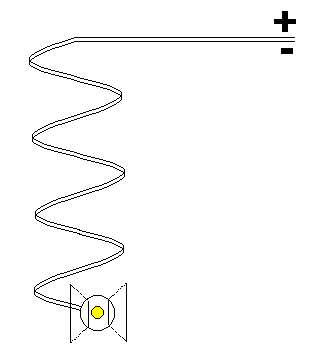
The bulb appears to be about the size of a flashlight bulb--small, but larger than one would expect for an insect. The effect works because real firefly flashes truly are quite bright. If you wanted to be more realistic, you could buy an even smaller bulb. Very small bulbs are uncommon but still available in specialty stores. The following picture was taken from topbulb.

The wire used is a thin gauge of magnet wire. The two strands run up a nearby branch in a helical pattern to a point above which the firefly is to be positioned. I believe the part of the wires that hangs free is typically bent into a helical pattern of several loops to effect a crude spring to make the light bulb bounce. From a side view, that spring shape appears as a serpentine pattern. You can often see this serpentine shape at the end of the Pirates ride, when the fireflies become silhouetted against the brighter light of the exit door.
Magnet wire is just very thin wire, usually copper, that is insulated by a very thin film. Since the wire is so thin, the voltages used should be low. I used a 9-volt battery, although a voltage adapter can probably be used if wall power is used.
The magnet wire photo below is from Femco Magnet Wire. Magnet wire is commonly available in hobby shops and electrical supply shops (like Radio Shack), and is inexpensive.
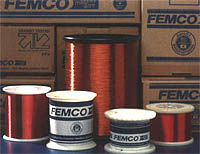
If you make your own fireflies for outside usage, be very careful of the electrical components if it's wet or if it rains. You could even improve on Disney's design. Real fireflies flash in quick double flashes, and not as frequently. Such things could all be implemented without much more difficulty.



The firefly composites were created by myself, using photographs from National Geographic magazine. The two daytime photos are from: July 1971, page 48;
July 1962, page 53. The two nighttime photos are from: July 1971, pages 44, 49.
The mechanical illustration is mine.
Updated: October 11, 2001